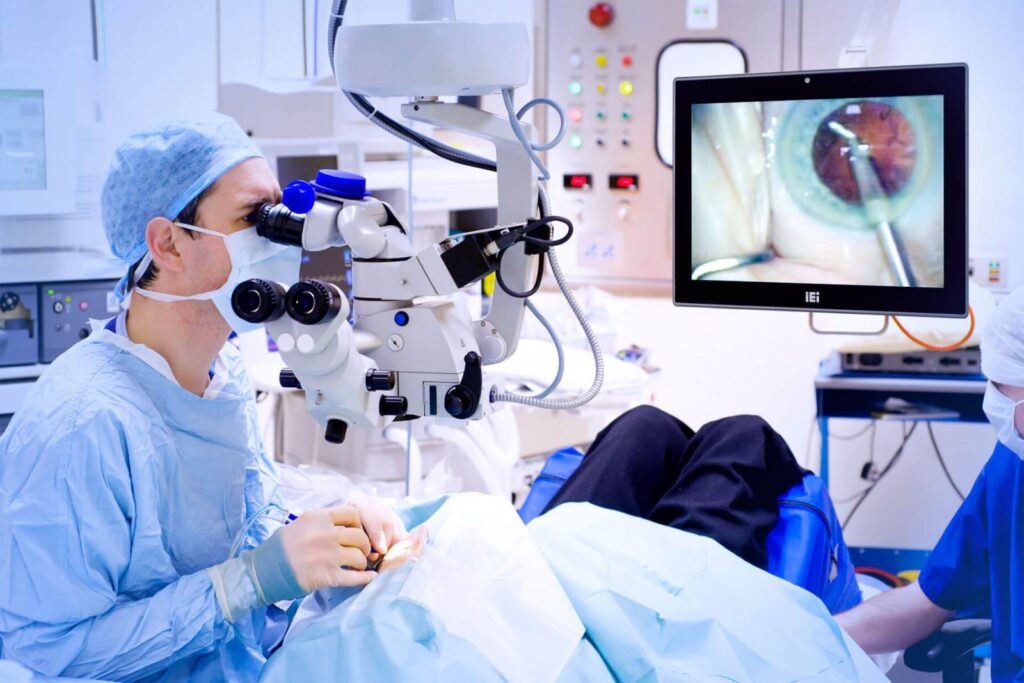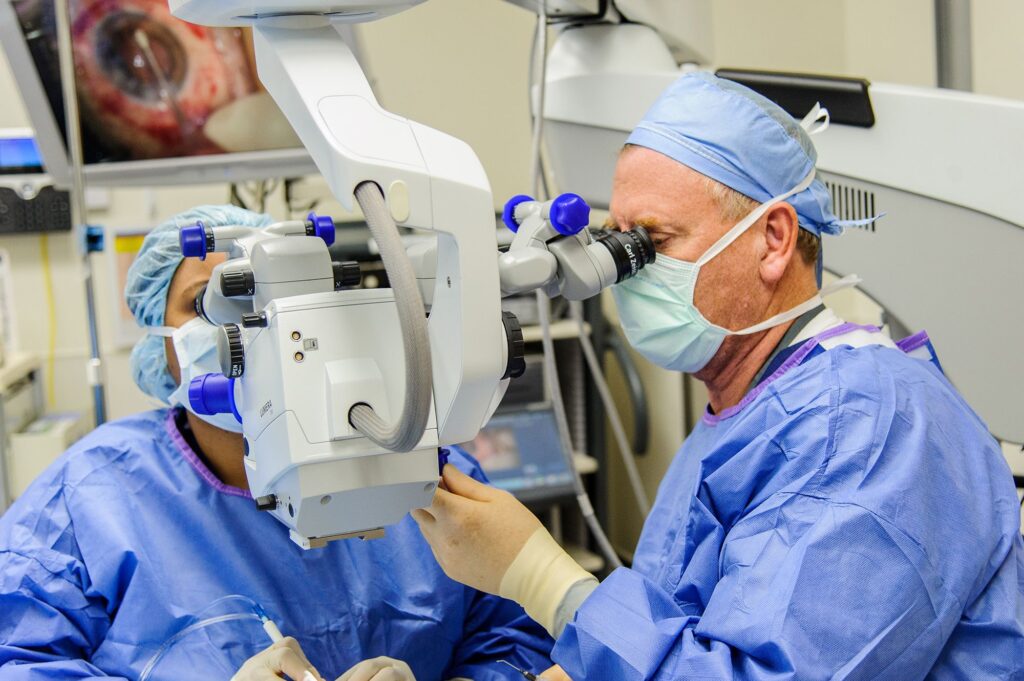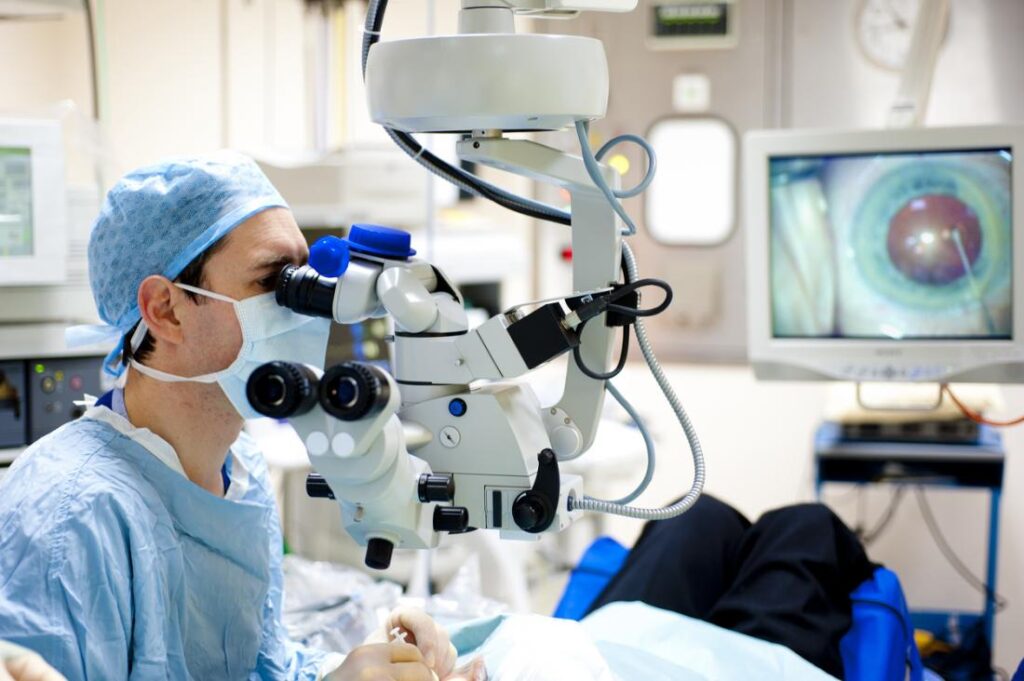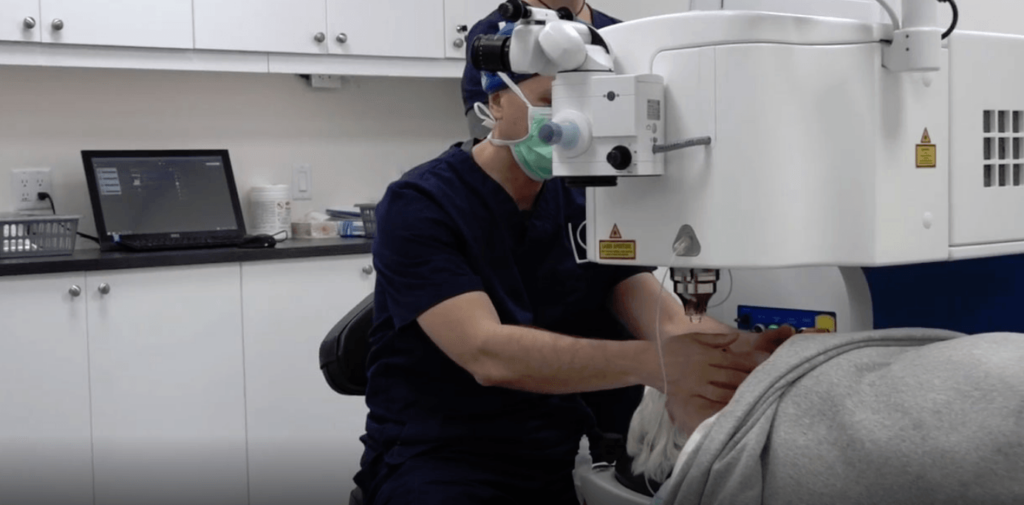LASIK, or Laser-Assisted In Situ Keratomileusis, is a revolutionary surgical procedure that aims to correct vision problems and eliminate the need for glasses or contact lenses. If you have been considering LASIK as an option to improve your vision, it’s essential to have a clear understanding of what the procedure entails, its benefits, and the potential risks involved. In this comprehensive article, we will delve into the world of LASIK expertise and explore every aspect of this life-changing procedure.
Understanding LASIK: A Comprehensive Overview
Before diving into the intricacies of surgery LASIK, it is crucial to have a solid understanding of the procedure and its scientific underpinnings.
At its core, LASIK is a refractive surgery that reshapes the cornea to correct common vision problems such as nearsightedness, farsightedness, and astigmatism. By reshaping the cornea, LASIK allows light entering the eye to be properly focused on the retina, resulting in clearer vision.
But how exactly does LASIK achieve this remarkable vision correction? Let’s take a closer look at the science behind this revolutionary procedure.
The Science Behind LASIK
LASIK works by using a laser to create a thin flap in the cornea. This flap is then lifted, and the underlying corneal tissue is reshaped using an excimer laser. The excimer laser emits a cool ultraviolet light beam that precisely removes microscopic amounts of tissue from the cornea, reshaping it to the desired curvature.

By reshaping the cornea, LASIK alters the way light rays are bent as they enter the eye. This allows the light to be properly focused on the retina, which is essential for clear vision. The corneal flap is then repositioned, acting as a natural bandage that promotes quick healing.
The precise reshaping of the cornea is where the expertise of the LASIK surgeon comes into play. By carefully sculpting the cornea to meet the specific needs of each patient, the surgeon can customize the procedure to achieve optimal vision correction.
It is important to note that LASIK is a highly individualized procedure. Each patient’s eyes have unique characteristics, and the surgeon takes these into account when planning and performing the surgery. This personalized approach ensures that the outcome of the procedure is tailored to the patient’s specific visual needs.
The Evolution of LASIK Technology
Over the years, LASIK technology has advanced significantly, enhancing both the accuracy and safety of the procedure. Laser technology has become more refined, allowing for more precise and customized corneal reshaping.
One significant advancement in LASIK technology is the use of wavefront-guided imaging. This diagnostic technology enables LASIK surgeons to gather detailed information about each patient’s unique visual irregularities. By analyzing the wavefront data, the surgeon can identify and address higher-order aberrations, which are subtle imperfections in the eye’s optical system that can impact visual quality.
Wavefront-guided LASIK takes into account not only the patient’s refractive error but also the unique characteristics of their eye’s optical system. This personalized approach allows for a more accurate and customized treatment, leading to improved visual outcomes.
Another notable advancement in LASIK technology is the development of femtosecond lasers. These lasers are used to create the corneal flap with even greater precision and safety. The femtosecond laser emits ultra-fast pulses of laser energy, allowing for a more controlled and predictable flap creation process.
Furthermore, advancements in tracking systems have made LASIK even safer. Eye-tracking technology ensures that the laser remains precisely aligned with the cornea throughout the procedure, even if the patient’s eye moves. This real-time tracking helps maintain accuracy and minimizes the risk of complications.
With these technological advancements, LASIK has become a highly effective and safe procedure for vision correction. Patients can now achieve clearer vision with minimal discomfort and downtime.
The LASIK Procedure: What to Expect
While LASIK has become a commonly performed procedure, it is essential to be well-prepared and know what to expect before undergoing surgery. Understanding the pre-procedure preparations and the step-by-step process of LASIK will help alleviate any anxiety and ensure a smooth experience.
Pre-Procedure Preparations
Prior to undergoing LASIK, you will have a comprehensive eye examination to assess your candidacy for the procedure. Your LASIK surgeon will evaluate various factors, such as the stability of your vision prescription and the overall health of your eyes.
During this evaluation, your surgeon will also discuss any pre-operative instructions, such as avoiding the use of contact lenses for a specified time before the procedure and discontinuing certain medications that may interfere with the healing process.
Additionally, you may be advised to refrain from wearing eye makeup or applying any creams or lotions around the eye area on the day of the procedure. These precautions are taken to minimize the risk of infection and ensure optimal results.
The LASIK Procedure Step-by-Step
The LASIK procedure is relatively quick and typically performed on an outpatient basis. While individual experiences may vary, the following steps provide a general overview of what you can expect during the procedure.
- Anesthetic eye drops are administered to numb the eyes and ensure comfort throughout the procedure.
- A protective flap is created in the cornea using a femtosecond laser or a microkeratome. This flap is gently lifted to expose the underlying corneal tissue.
- The excimer laser is then utilized to painlessly reshape the cornea, guided by the specific requirements of your vision correction. This laser uses a cool ultraviolet light beam to precisely remove microscopic amounts of tissue from the cornea, allowing for the correction of nearsightedness, farsightedness, and astigmatism.
- Once the cornea has been reshaped, the flap is carefully repositioned, acting as a natural bandage to protect the treated area and promote rapid healing. The flap adheres without the need for stitches, thanks to the natural suction of the cornea.
- Following the procedure, your eyes may be shielded with protective goggles or eye shields to prevent accidental rubbing or injury during the initial healing phase. These shields also serve to protect your eyes from bright lights and dust particles.
- Your LASIK surgeon will provide you with detailed post-operative instructions, including the use of prescribed eye drops and the importance of attending follow-up appointments to monitor your progress. It is crucial to follow these instructions diligently to ensure the best possible outcome.
It is important to note that while LASIK is a highly effective and safe procedure, like any surgical intervention, it carries some risks. Your LASIK surgeon will discuss these risks with you during the pre-operative evaluation and address any concerns or questions you may have. By understanding the procedure and its potential risks, you can make an informed decision about whether LASIK is right for you.

The Benefits of LASIK
One of the key reasons why LASIK has gained immense popularity is the numerous benefits it offers to those seeking vision correction. From immediate improvements in visual acuity to long-term advantages, LASIK has the potential to transform your life in more ways than one.
Immediate and Long-Term Advantages
One of the most significant benefits of LASIK is the immediate improvement in vision. Many patients report being able to see clearly without glasses or contacts shortly after the procedure.
Imagine waking up in the morning and being able to see the world around you with crystal clarity, without having to fumble for your glasses or put in your contact lenses. LASIK can make this a reality, providing you with the freedom to enjoy clear vision from the moment you open your eyes.
Furthermore, the results of LASIK are typically long-lasting, providing years of freedom from corrective lenses. While the exact duration of the results may vary from person to person, LASIK has been shown to have a lasting impact on visual acuity.
With LASIK, you can bid farewell to the hassle of constantly updating your prescription glasses or ordering new contact lenses. The procedure aims to correct your vision to the point where you no longer need external aids to see clearly. This means no more visits to the optometrist for new prescriptions or spending money on expensive lenses.
LASIK and Lifestyle Improvements
The freedom from glasses or contact lenses that LASIK offers can significantly enhance your quality of life. Engaging in activities such as swimming, sports, or even simple everyday tasks becomes easier without the reliance on external visual aids.
Imagine being able to dive into a pool or play your favorite sport without worrying about your glasses falling off or your contact lenses getting dislodged. LASIK can provide you with the confidence and freedom to fully enjoy these activities without any hindrance.
Additionally, LASIK eliminates the need for costly and time-consuming maintenance associated with glasses and contacts, saving you both money and valuable time. No more cleaning your glasses or dealing with the discomfort of dry eyes caused by contact lenses. LASIK simplifies your daily routine, allowing you to focus on the things that truly matter.
Furthermore, LASIK can have a positive impact on your career. If your job requires excellent vision, such as being a pilot or a surgeon, LASIK can help ensure that you perform at your best without any visual limitations. It can open up new opportunities and possibilities in your professional life.
In conclusion, LASIK offers a multitude of benefits that go beyond just improved vision. It provides immediate and long-term advantages, enhances your lifestyle, and eliminates the need for glasses or contact lenses. Consider LASIK as a life-changing option for vision correction and experience the freedom and convenience it brings.

Risks and Considerations of LASIK
While LASIK is generally considered to be safe and effective, it is essential to be aware of the potential risks and considerations associated with the procedure. Understanding these factors will help you make an informed decision about whether LASIK is the right choice for you.
Potential Side Effects and Complications
Although rare, some potential side effects and complications can arise from LASIK surgery. These can include dry eyes, temporary visual disturbances such as halos or glare, and in rare cases, infection or corneal flap complications.
Your LASIK surgeon will thoroughly discuss these risks with you during the consultation process and provide guidance on how to minimize them.
Who is the Ideal Candidate for LASIK?
While LASIK is suitable for many individuals, not everyone is an ideal candidate for the procedure. Factors such as the stability of your vision prescription, the overall health of your eyes, and certain medical conditions can impact your candidacy for LASIK.
A comprehensive evaluation by a qualified LASIK surgeon will help determine if you meet the necessary criteria and can safely undergo the procedure.
Choosing the Right LASIK Surgeon
One of the most crucial aspects of LASIK is selecting the right surgeon to perform the procedure. The expertise and skill of the surgeon can profoundly impact the outcome of your surgery and overall visual satisfaction.
Essential Qualities in a LASIK Surgeon
When selecting a LASIK surgeon, it is essential to consider their qualifications, experience, and track record of success. Look for a surgeon who is board-certified and specializes in refractive surgery. Furthermore, inquire about the surgeon’s patient satisfaction rates and their familiarity with the latest LASIK technology.
Questions to Ask Your Potential Surgeon
Before committing to LASIK surgery, it is essential to schedule a consultation with your prospective surgeon and ask them pertinent questions about the procedure and its suitability for your specific needs.
Some questions to consider asking include:
- How many LASIK procedures have you performed?
- What is your success rate with regard to vision improvement?
- What is your protocol for managing potential complications?
- What post-operative care and follow-up will be provided?
By conducting thorough research and asking these important questions, you can ensure that you are in the hands of a skilled LASIK surgeon who can guide you through the process and maximize your chances of achieving optimal visual outcomes.
Embarking on the journey towards visual clarity through LASIK expertise can be life-changing. Armed with this comprehensive overview of LASIK, you are now equipped with the necessary knowledge to make informed decisions regarding your vision correction options.
Always remember to consult with a qualified LASIK surgeon who can evaluate your unique situation and provide personalized recommendations based on your specific needs, ensuring the best possible outcome for your LASIK procedure.
More to read: What to Expect from LASIK Eye Surgery





